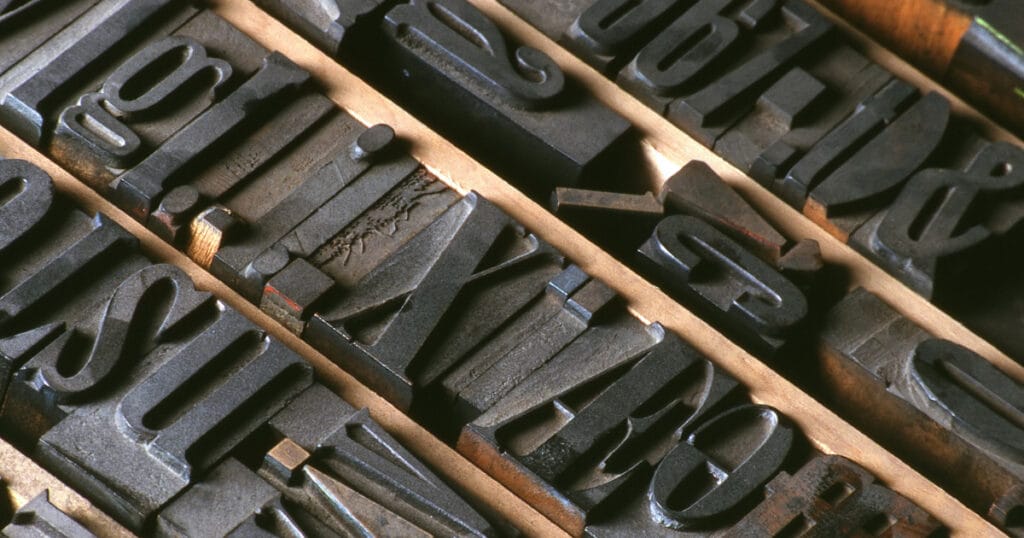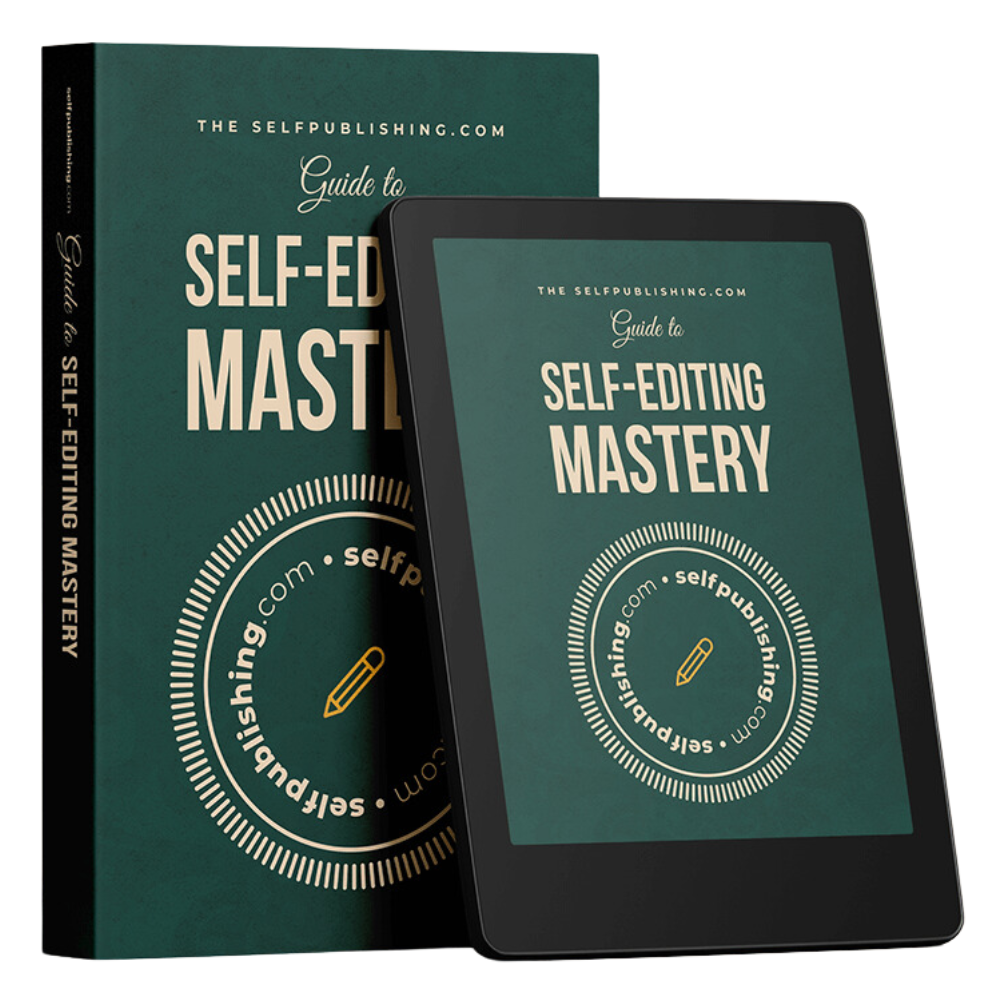Typesetting and formatting are often used interchangeably even though technically they are not the same. The word “typesetting” has taken on a different meaning over time as updates in technology have made the word’s original definition almost obsolete.
In this article, we’ll look at how the word typesetting is currently used as it applies to book development, how that definition has changed, and what the process looks like today.
What is typesetting?
Typesetting (formatting) is designing text within the parameters of a set page size in preparation for printing. The process takes into consideration characters, glyphs, and symbols. It also includes spacing between lines, letters, and margin widths. The proper placement of tables, images, and pull quotes are included as well as decisions on pagination and which typefaces should be used to create an aesthetically pleasing final design.
A history of typesetting
Letterpress printing is thought to be traced back to the Tang Dynasty in China (618–907 AD). The art of carving out blocks of wood with letters and then covering them in ink to print on parchment paper was later updated by the German inventor Johannes Gutenberg who created a more efficient printing process in the 1400s. With his printing presses (also called “scree presses”), each letter of the alphabet and punctuation were carved into individual wood pieces (later metal) in different sizes and fonts called moveable type.

It was the compositor’s job to assemble the moveable type (the mirror image of what it would look like on paper) so that individual pages could be printed. In the simplest terms, the individual letters would be placed together to make words, then paragraphs, which would then be coated with special ink and pressed onto individual pages—later bound together as a book.
As Gutenberg perfected his printing process, he set out to accomplish his most ambitious project, the Gutenberg Bible. The time-consuming, manual process required a meticulous focus on the smallest details. It is estimated to have taken between 3-5 years to complete.
Unlike modern word processors and editing software that allow you to see grammatical errors and formatting mistakes on a screen before printing, early typesetting had so many moving parts that errors could slip through the cracks and not be found until a misprint occurred.
Typesetting today
While you still have hobbyists and small printing presses that continue the time-honored tradition of manual typesetting, digital printing took over in 1989, so book formatting became an electronic process rather than a hands-on, labor-intensive one.
According to UCLA’s History of the Book website,
In the 1980s, when desktop computers became available, typesetting and layout programs were among the first commercially available software packages. Once esoteric, professional trade terms like “leading” or “font” became commonplace…the main impact of digitization was to make it possible for the technical suite of once-professional skills—from the design of type to entire books—to become widely available on personal computers in widespread business, educational, and domestic use. The categories of reader, writer, designer, publisher, and producer could blur.
From QuarkXPress to Adobe Indesign
In 1987, QuarkXPress came to market and upended interior book design with its user-friendly WYSIWYG (What You See Is What You Get) interface that didn’t require users to have in-depth technical knowledge to work with the program.
Within a short time, it became the industry standard for Macintosh (Mac) users and then for Windows users when it released a Windows version in 1992; however, its success and substantial market share downshifted when Adobe released its formatting software Indesign 1.0 in 2004.
Early adopters of Indesign found it to be more streamlined than QuarkXPress with upgraded features at a more affordable price point. Here’s an insightful 2003 comparison review of the two.
The new age of design software
Both QuarkXPress and Adobe Indesign continue to play the long game in the book design industry. They offer robust tools for design professionals who need a flexible software solution that allows them to do many of the following:
- Manipulate text
- Work with layers
- Import PDF and other media
- Offers options for print-ready files
- Access full design control
Both QuarkXPress and Adobe Indesign can be cost-prohibitive. They both work on a subscription model, which can add up to lots of $$$ over time. If you want software made specifically for designers but at a more affordable price, Affinity Publisher (Mac, Windows) is worth a look.
If you are not a designer, don’t have the time to format your book, or hire a professional designer is not in your budget, you still have options.
With the newest generation of book formatting software, interior book design is done for you with minimal input from your side (unless you want to add special touches). The downside is that there are limitations to what you can customize, but the great news is that these programs are updated regularly with new features.
Here are a few popular programs:
- Atticus – $147 (one-time payment) – online formatting software with in-app writing capabilities. (See our review here.)
- Chapterly – $9.99 – $14.99 per month – all-in-one book creation (writing, cover, and interior design) software that includes formatting options. (See our review here.)
- Vellum – $199.99 – $249.99 (one-time payment) – book formatting software (download) for Mac users only. (See our review here.)
If you can write your book in a word processor like Google Docs or Microsoft Word and save it to a file for upload, then you’ve already done most of the work. These intuitive software programs will do all of the heavy lifting by allowing you to:
- Customize the style for every part of your book with preset templates
- Create print-ready files like PDFs and EPUB in a variety of trim sizes
- Write within the app with authoring tools
- Add endnotes and footnotes
- Add images
Note: If you don’t want to use dedicated formatting software, you can do basic formatting in word processing software and upload directly to an online printer, aggregator, or distribution service like Draft2Digital or AmazonKDP. They both accept word processor files like Google Docs and Microsoft Word and can turn them into print-ready files for printing.
Final thoughts
In just a couple of decades, the process of formatting a book has gone from a cost-prohibitive, specialized service (typesetting) offered by a limited number of providers to an affordable, user-friendly, software solution that almost anyone can use.
If you are an author who wants to take more creative control of your book’s development, the number of tools available for book formatting, book cover design, printing (POD), and other services continues to grow at a phenomenal rate.
As with all services that pertain to your book’s creation, do your research. Ask other authors for recommendations and consider how much time you have to dedicate to actively engaging in the creative process before you invest. The last thing you want is expensive software wasting space on your computer or a monthly subscription fee for software you don’t have time to use.
You always have the option to hire a professional book interior designer. Selfpublishing.com has book professionals who can help.

